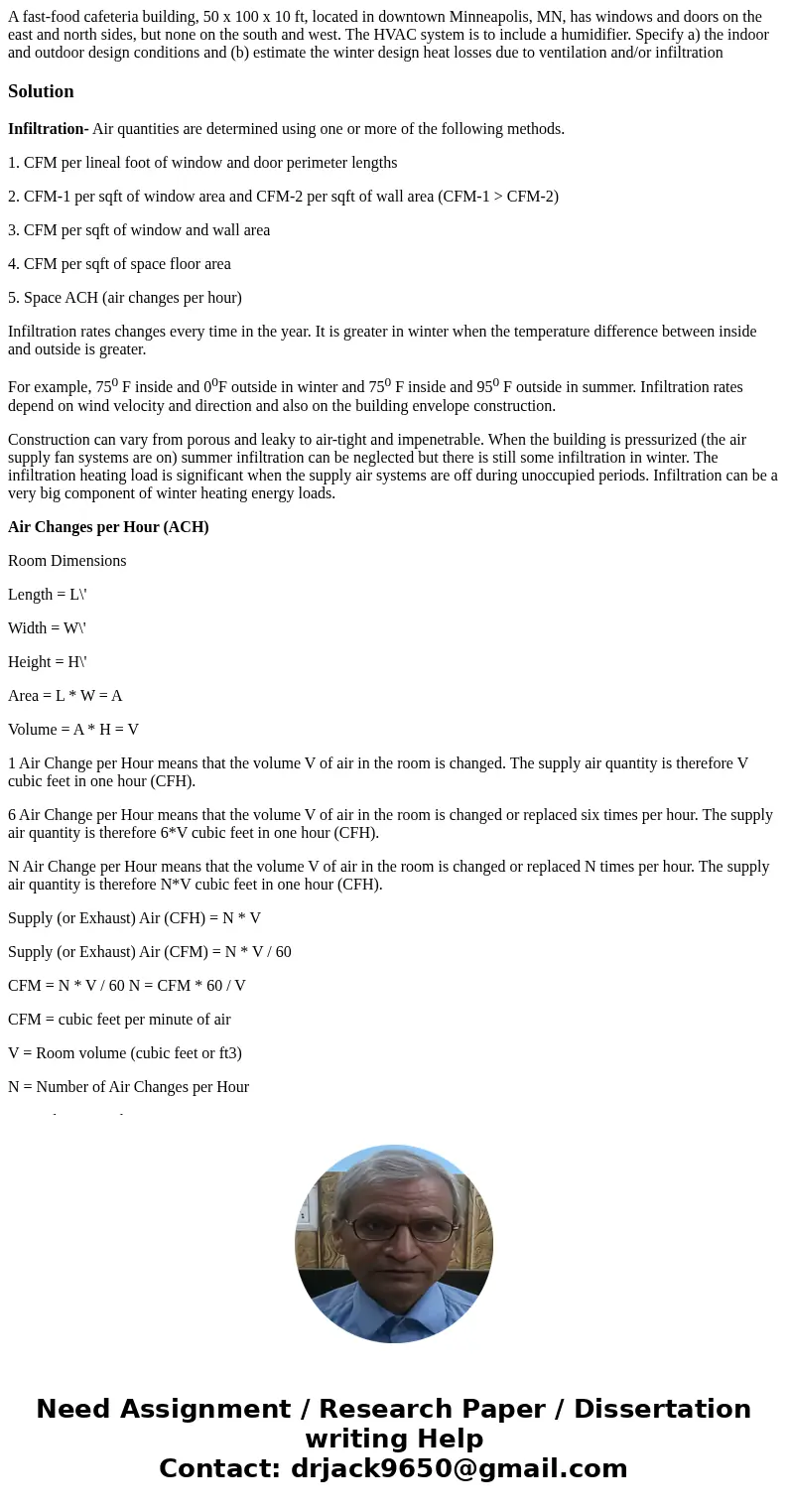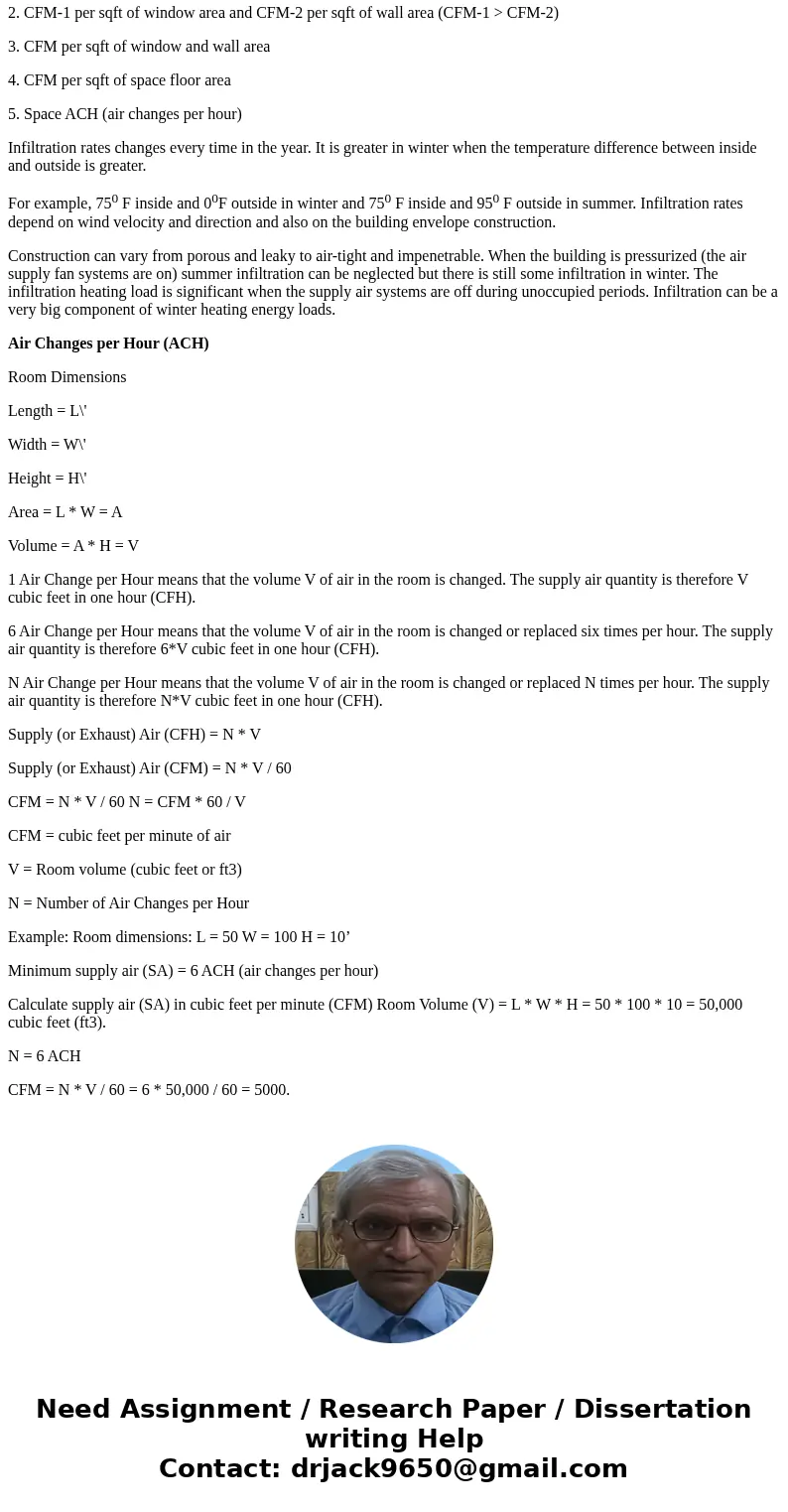A fastfood cafeteria building 50 x 100 x 10 ft located in do
A fast-food cafeteria building, 50 x 100 x 10 ft, located in downtown Minneapolis, MN, has windows and doors on the east and north sides, but none on the south and west. The HVAC system is to include a humidifier. Specify a) the indoor and outdoor design conditions and (b) estimate the winter design heat losses due to ventilation and/or infiltration
Solution
Infiltration- Air quantities are determined using one or more of the following methods.
1. CFM per lineal foot of window and door perimeter lengths
2. CFM-1 per sqft of window area and CFM-2 per sqft of wall area (CFM-1 > CFM-2)
3. CFM per sqft of window and wall area
4. CFM per sqft of space floor area
5. Space ACH (air changes per hour)
Infiltration rates changes every time in the year. It is greater in winter when the temperature difference between inside and outside is greater.
For example, 750 F inside and 00F outside in winter and 750 F inside and 950 F outside in summer. Infiltration rates depend on wind velocity and direction and also on the building envelope construction.
Construction can vary from porous and leaky to air-tight and impenetrable. When the building is pressurized (the air supply fan systems are on) summer infiltration can be neglected but there is still some infiltration in winter. The infiltration heating load is significant when the supply air systems are off during unoccupied periods. Infiltration can be a very big component of winter heating energy loads.
Air Changes per Hour (ACH)
Room Dimensions
Length = L\'
Width = W\'
Height = H\'
Area = L * W = A
Volume = A * H = V
1 Air Change per Hour means that the volume V of air in the room is changed. The supply air quantity is therefore V cubic feet in one hour (CFH).
6 Air Change per Hour means that the volume V of air in the room is changed or replaced six times per hour. The supply air quantity is therefore 6*V cubic feet in one hour (CFH).
N Air Change per Hour means that the volume V of air in the room is changed or replaced N times per hour. The supply air quantity is therefore N*V cubic feet in one hour (CFH).
Supply (or Exhaust) Air (CFH) = N * V
Supply (or Exhaust) Air (CFM) = N * V / 60
CFM = N * V / 60 N = CFM * 60 / V
CFM = cubic feet per minute of air
V = Room volume (cubic feet or ft3)
N = Number of Air Changes per Hour
Example: Room dimensions: L = 50 W = 100 H = 10’
Minimum supply air (SA) = 6 ACH (air changes per hour)
Calculate supply air (SA) in cubic feet per minute (CFM) Room Volume (V) = L * W * H = 50 * 100 * 10 = 50,000 cubic feet (ft3).
N = 6 ACH
CFM = N * V / 60 = 6 * 50,000 / 60 = 5000.


 Homework Sourse
Homework Sourse